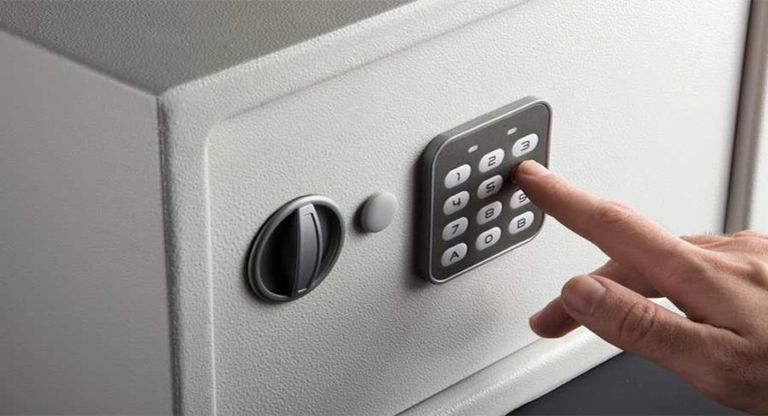How to Choose the Best Safe for Your Home

Whether you want to protect valuable items, important documents, or irreplaceable family heirlooms, choosing the right safe can provide peace of mind and security. However, with so many options available, selecting the best safe for your needs can be overwhelming. This guide will help you navigate the key factors to consider when choosing the perfect safe for your home.
1. Determine What You Need to Protect
The first step in choosing a safe is understanding what you need to protect. Different safes are designed for different purposes, so identifying your specific needs is crucial. Common items to store in a home safe include:
- Cash and Jewelry: High-value items that are often targeted in burglaries.
- Important Documents: Birth certificates, passports, wills, and other vital records.
- Digital Media: Hard drives, USB drives, and other storage devices containing sensitive information.
- Sentimental Items: Family heirlooms, photo albums, or irreplaceable keepsakes.
Once you know what you need to protect, you can choose a safe that offers the right type of protection.
2. Understand the Different Types of Safes
There are various types of safes available, each offering different levels of security and protection. Here are some of the most common types:
- Fire-Resistant Safes: Designed to protect contents from high temperatures and smoke damage. These safes are rated by how long they can withstand fire—typically ranging from 30 minutes to 2 hours.
- Burglary Safes: Built to resist break-ins and protect against theft. These safes are often made with reinforced steel and feature complex locking mechanisms.
- Waterproof Safes: Ideal for protecting valuables from water damage due to floods, burst pipes, or fire suppression systems.
- Wall and Floor Safes: These are installed directly into the wall or floor, offering hidden protection that can be difficult for burglars to locate or remove.
- Portable Safes: Smaller safes that are easy to transport, offering flexibility for those who need to secure valuables on the go.
3. Consider the Size and Weight
The size and weight of your safe are important considerations. You need a safe that’s large enough to store all your valuables but not so large that it’s impractical for your home. Here’s what to consider:
- Interior Space: Make sure the safe has enough interior space to accommodate all the items you intend to store. Consider safes with adjustable shelves for better organization.
- Weight: Heavier safes are harder for thieves to carry off, providing an additional layer of security. However, extremely heavy safes may require special considerations for placement, such as reinforced flooring.
- Placement: Think about where you’ll place the safe in your home. Will it be hidden in a closet, bolted to the floor, or installed in a wall? Ensure that the location is secure and accessible only to those who need access.
4. Check the Security Features
A safe is only as good as its security features. Look for the following when choosing a safe:
- Locking Mechanism: There are several types of locking mechanisms, including key locks, combination locks, electronic keypad locks, and biometric locks. Each offers different levels of convenience and security. Biometric locks, for example, provide quick access through fingerprint recognition, while combination locks are reliable and do not require batteries.
- Steel Thickness: The thickness of the steel used in the construction of the safe is a critical factor in its ability to withstand break-ins. Safes with thicker steel walls and doors offer better protection.
- Pry-Resistant Doors and Hinges: Look for safes with pry-resistant doors and reinforced hinges to prevent forced entry.
- UL Rating: The Underwriters Laboratories (UL) rating is a good indicator of a safe’s security level. A UL rating ensures that the safe has been tested for resistance to break-ins and fire.
5. Consider Additional Features
Modern safes come with a variety of additional features that can enhance their functionality and convenience:
- Interior Lighting: Built-in lighting makes it easier to see the contents of the safe, especially in low-light conditions.
- Adjustable Shelving: Allows for better organization and efficient use of space within the safe.
- Dehumidifiers: Some safes offer built-in dehumidifiers to protect sensitive items from moisture damage.
- Alarm System Integration: Some safes can be integrated with your home’s alarm system, providing an added layer of security.
6. Set a Budget
Safes come in a wide range of prices, from affordable basic models to high-end safes with advanced features. Set a budget based on the value of the items you’re protecting and the level of security you require. Remember that a safe is an investment in your peace of mind, so it’s worth spending a little more for better protection.
7. Choose a Reputable Brand and Retailer
Finally, purchase your safe from a reputable brand and retailer. Well-known brands often have a history of quality and reliability, and purchasing from a trusted retailer ensures you receive proper support and warranty services. When possible, select a Canadian-made safe so that your money stays in the local community.
